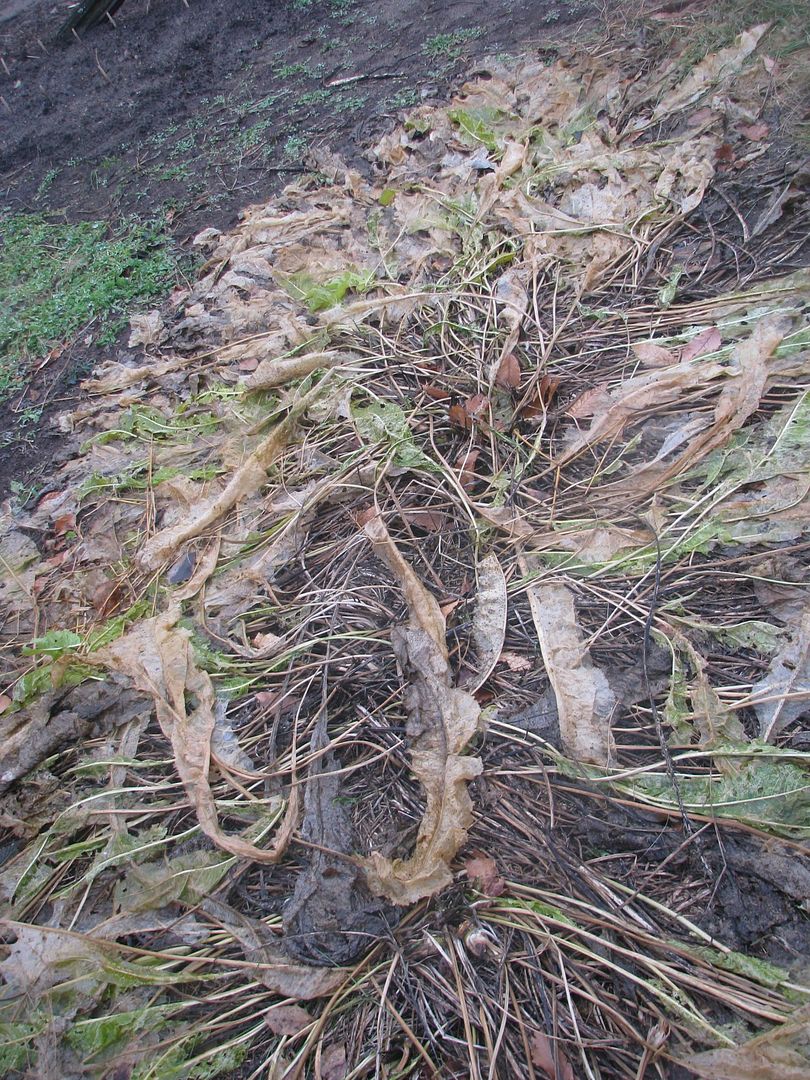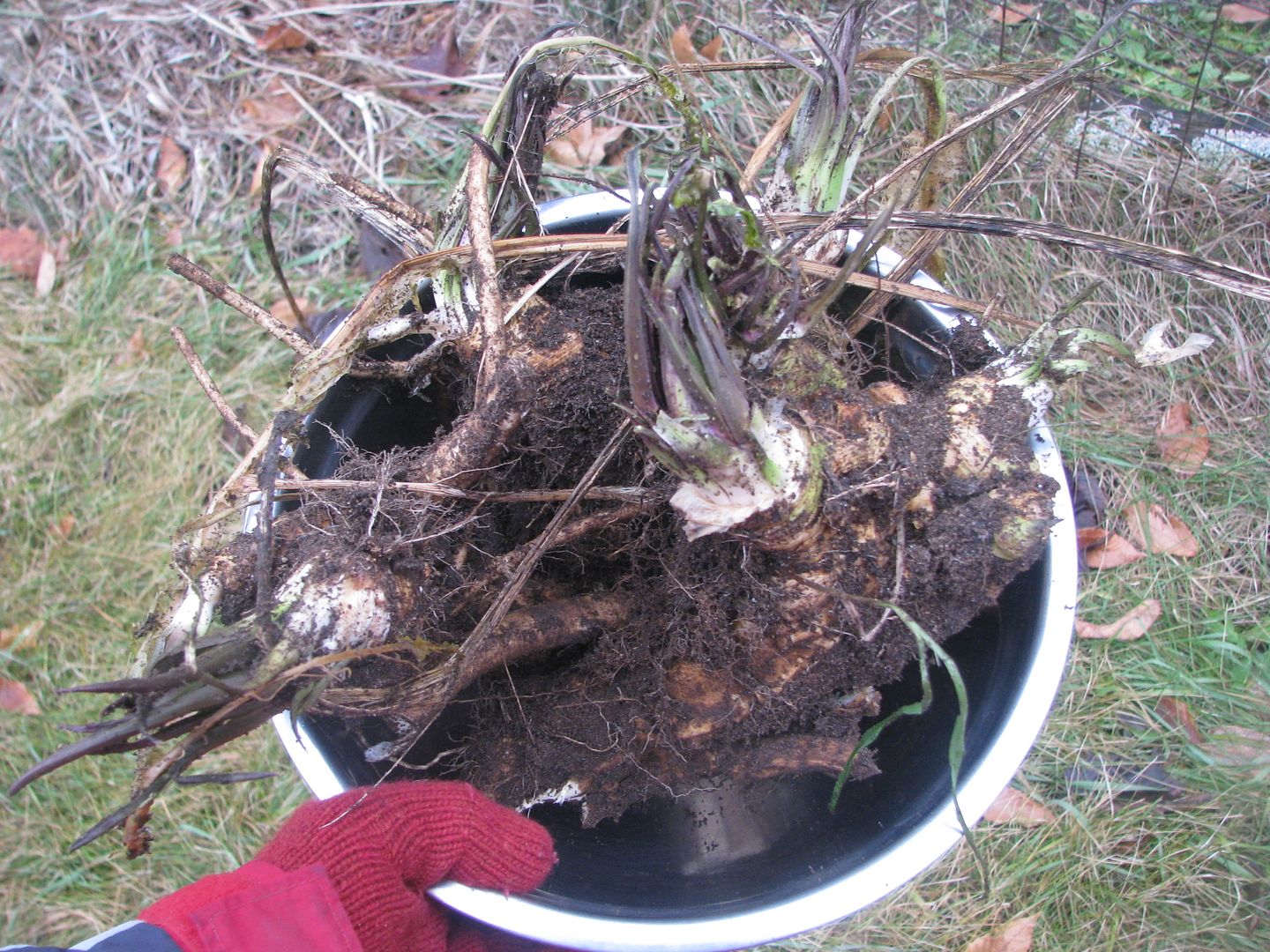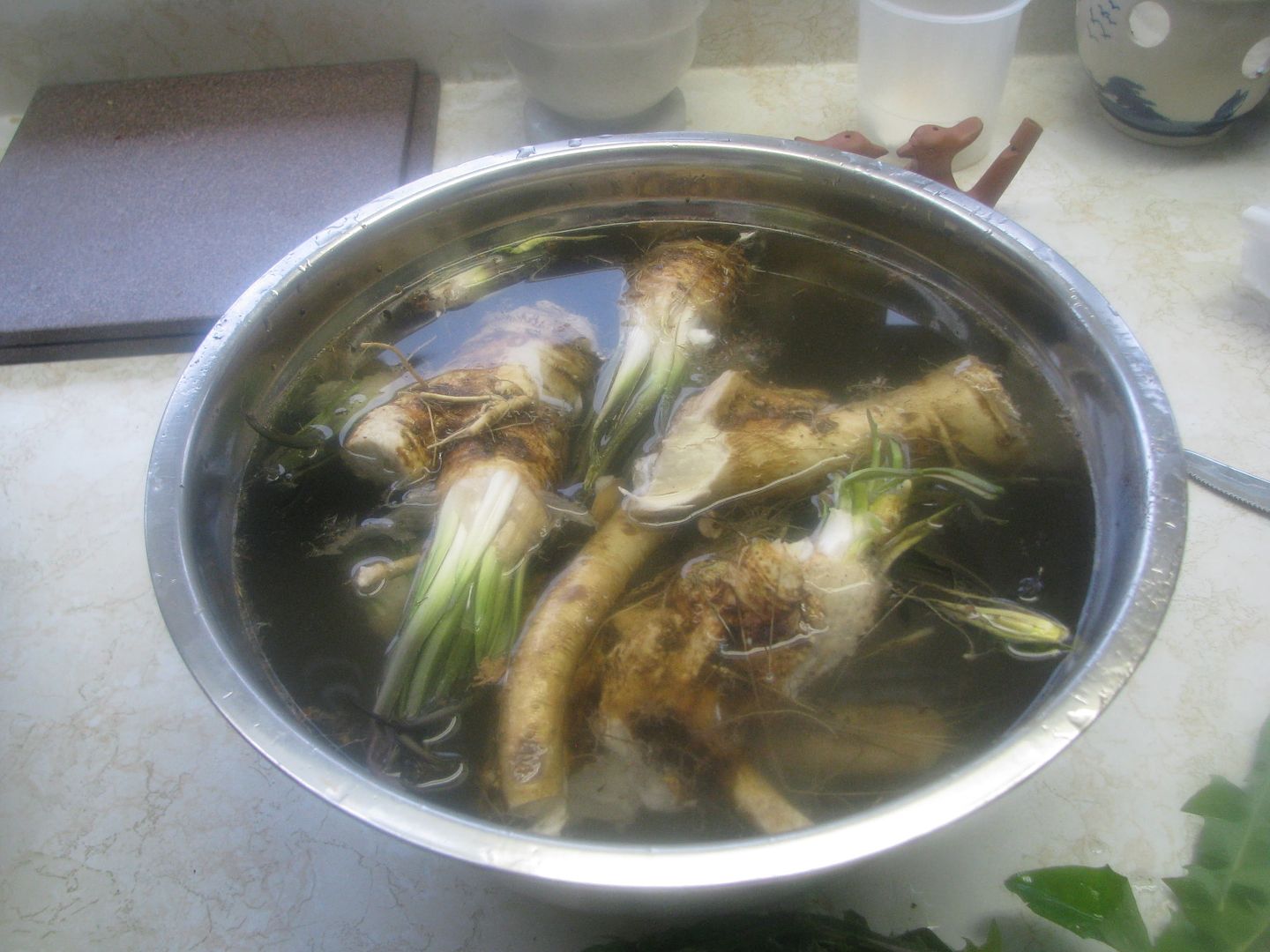
On first inspection, not very promising - a bed of dead horseradish leaves.
The experts on wiki tell me that:
"Where the English name horseradish comes from is not certain. It may derive by misinterpretation of the German name Meerrettich ("sea radish") as Mährrettich ("mare radish"). Some think it is because of the coarseness of the root. In Europe the common version is that it refers to the old method of processing the root called "hoofing." Horses were used to stamp the root tender before grating it."
It is an exceptionally hardy member of the Brassicacaea family, considered if not invasive, then at least persistant. The roots, early shoots, and seeds can be used according to Plants for a Future. However, they are normally propagated vegetatively so you'll probably have to look elsewhere to seed your mustard mix.

Digging in the soil reveals roots and shoots.
Best known of its traditional uses is when the macerated root is mixed with vinegar to produce the piquant sauce bearing its name. I like horseradish sauce but don't use a whole lot of it so I thought I would follow up on advice given to me in several sources to boil the roots. This destroys the volatile 'mustard' oils producing a rather bland root vegetable. I'll let you know next time what it tasted like.

I love the soft focus of this picture - must have been steam forming on the lens after being outside in the ch-ch-chilly fall.
Despite its invasive nature, I tend to plant it In The Perennial Garden because I like the look of its large, coarse leaves. There is also a variegated variety sometimes available (you'll note most comments on the link are about locating it). These can provide a dramatic contrast with finer textured plants.

Picture of horseradish in flower with daylily in front if I remember correctly from my old garden.

12 comments:
That was a really nice harvest:)
Thanks for the informative post on horseradish. I am planning on planting it next year. I have to tell you that I have a very difficult time trying to get onto your blog. 99% of the time my computor freezes. I have no idea why. That's why I don't get to leave you comments.
I haven't heard that comment but then again, maybe the other people can't be bothered to try and get on?
Not sure why it is freezing- I'll look into it. Thanks for being persistant and letting me know.
No problems getting onto your blog for me. If I don't leave a comment it's just because I'm short on time. I love horseradish also but don't use it very often. I guess that if I grew it I might find more uses for it.
Oh wow, I LOVE horseradish! I'd be in heaven with that much on hand! My family hails from Russia, where Khreyn is very popular which is horseradish is mixed with beetroot. mmm mmm! Mashed Potatoes, Lamb, Roast Beef, Cranberry & Horseradish dip... I could go on and on.
I'm jealous of such a great harvest. I wish I had space for horseradish in my garden next year!
I, too, have horseradish to harvest, although the leaves aren't quite dead. I have eleven one year old plants that probably aren't worth digging up this year. I also have a two year old plant that had a leaf spread of about four feet (or larger) in diameter. I'm hoping that one will have some nice roots. I like the regular grated horseradish on many things, but my favorite is hard boiled eggs. I look forward to hearing about your boiled recipe.
Thanks!
Nice harvest, love fresh horseradish, but I don't have space for it.
Lovely harvest!
I harvested horseradish only once, at my friends garden. The root was so difficult to pull out and it grows very deep in soil.
Someone told me that horseradish was so named because the root often resembles a horse (four legs, and a neck/head). I am the only one that likes horseradish sauce in my family and I can only eat a little bit at any given time - so growing it would be not very productive use of my garden space - but I am tempted just because it is such an interesting plant!
I love horseradish, but only tend to eat it during passover. I guess I just don't buy it any other time. I've always been afraid to put it in the garden as I keep hearing that it is invasive. And though I like it, I don't like it that much.
Kitsap: That's interesting. It does sort of look like a thick bodied animal of some sort.
Anyone know of critters that eat the horseradish leaves in West Central Missouri. I'm thinking small; possibly a vole (type of mouse). I've had something that in a day or 2 completely devoured the leaves on mine. I've had it fenced in with small wire fencing, so whatever it was got through that. Any suggestions, email me at mica4339@gmail.com please.
Post a Comment